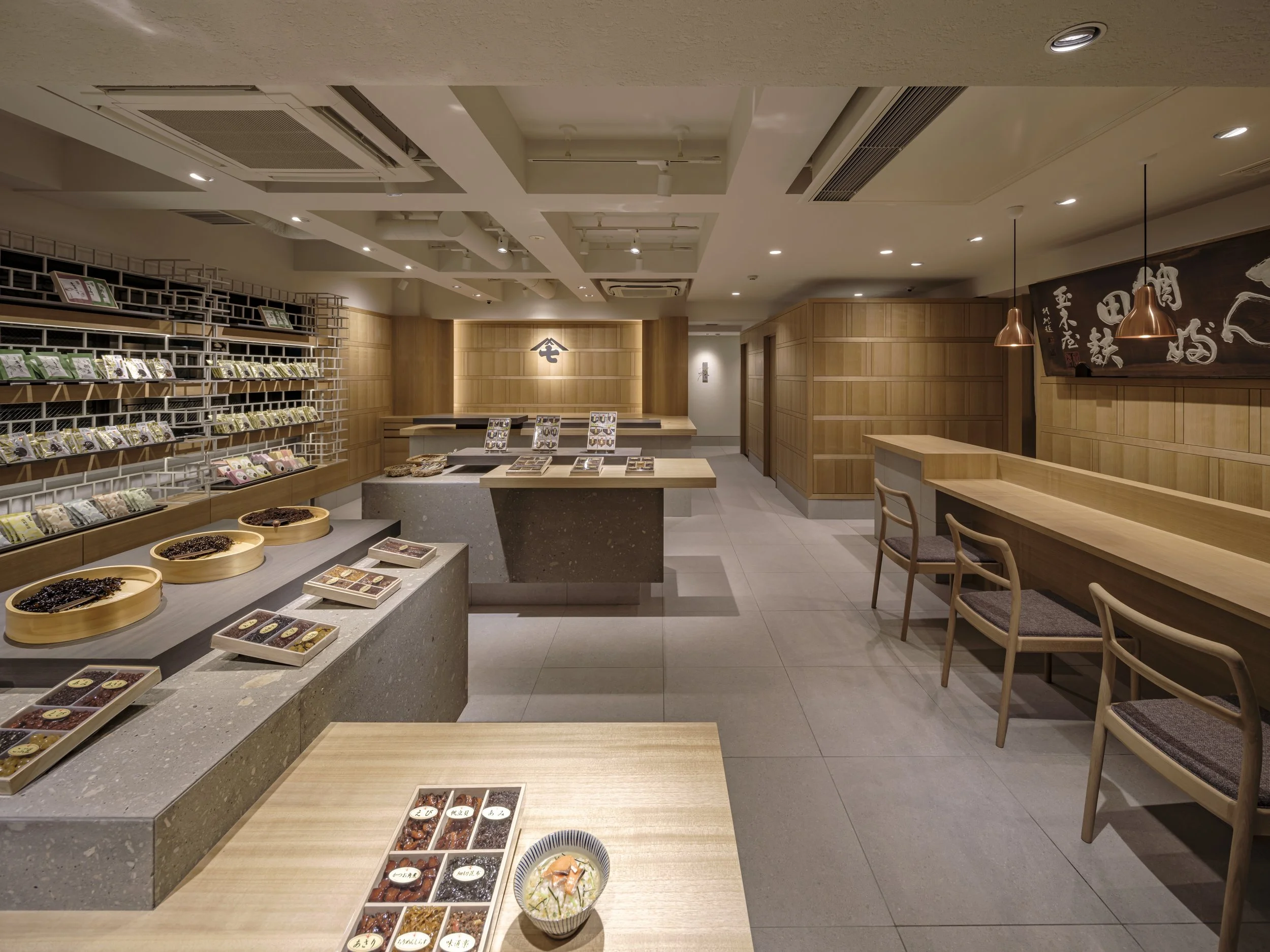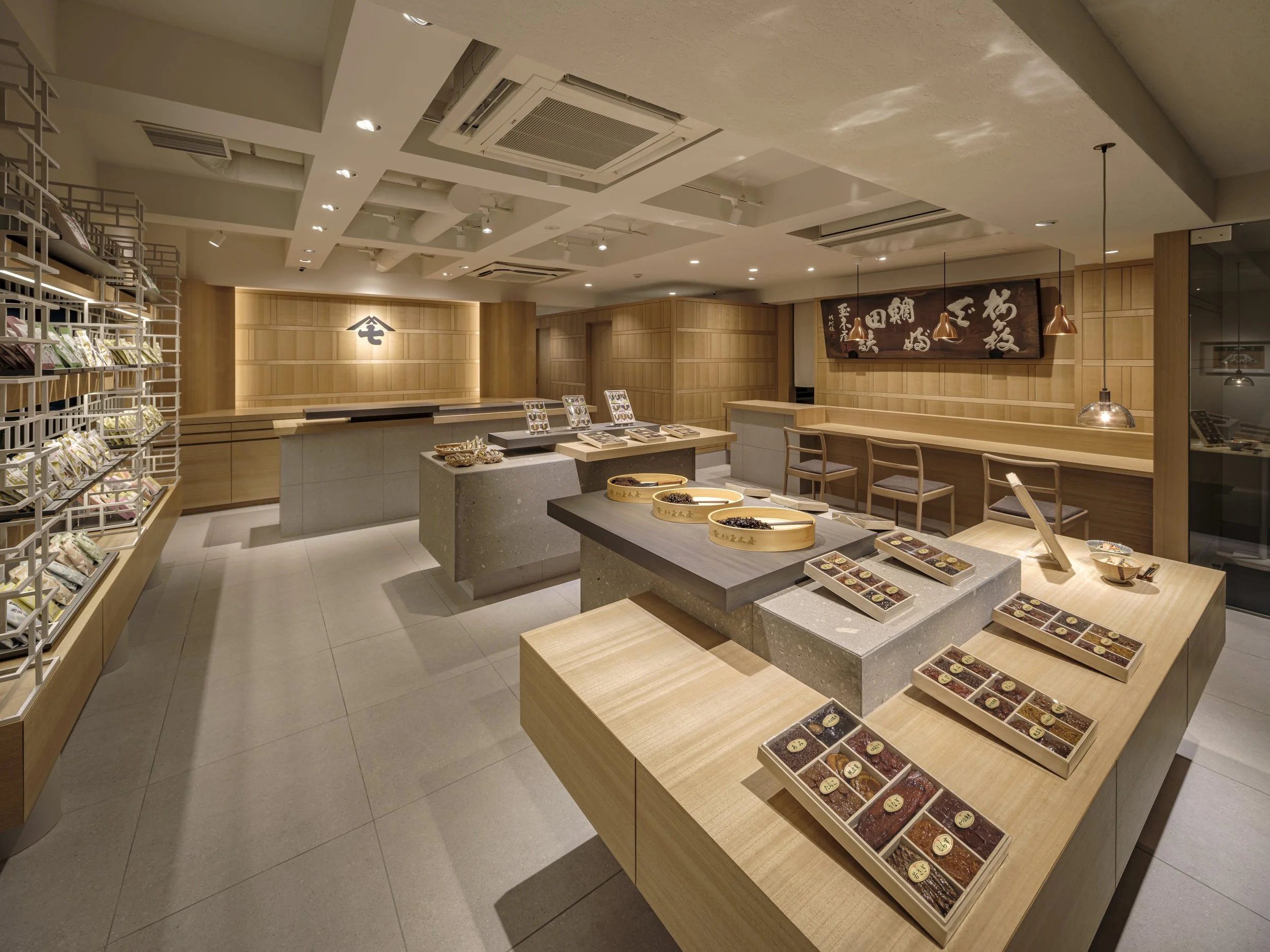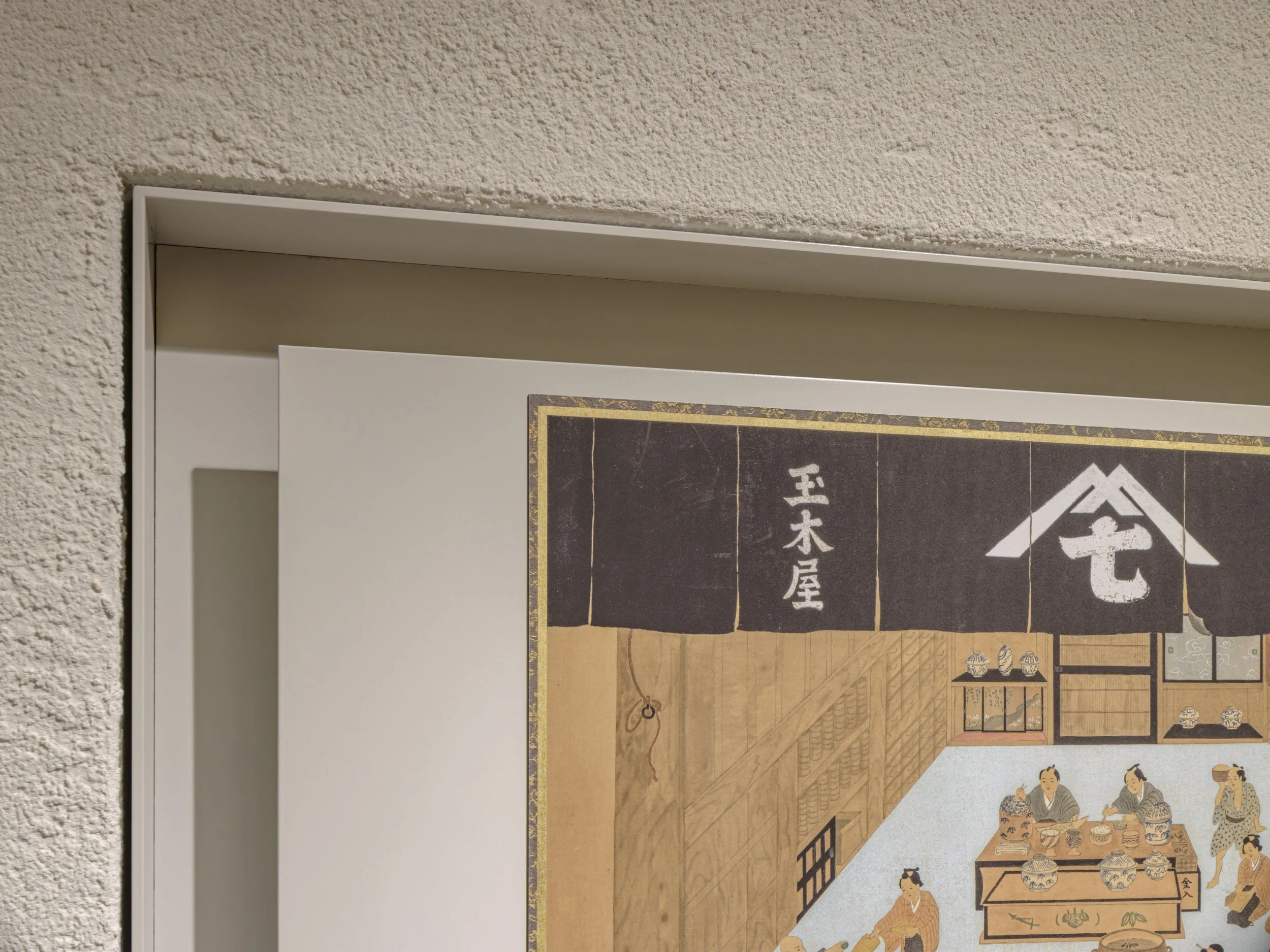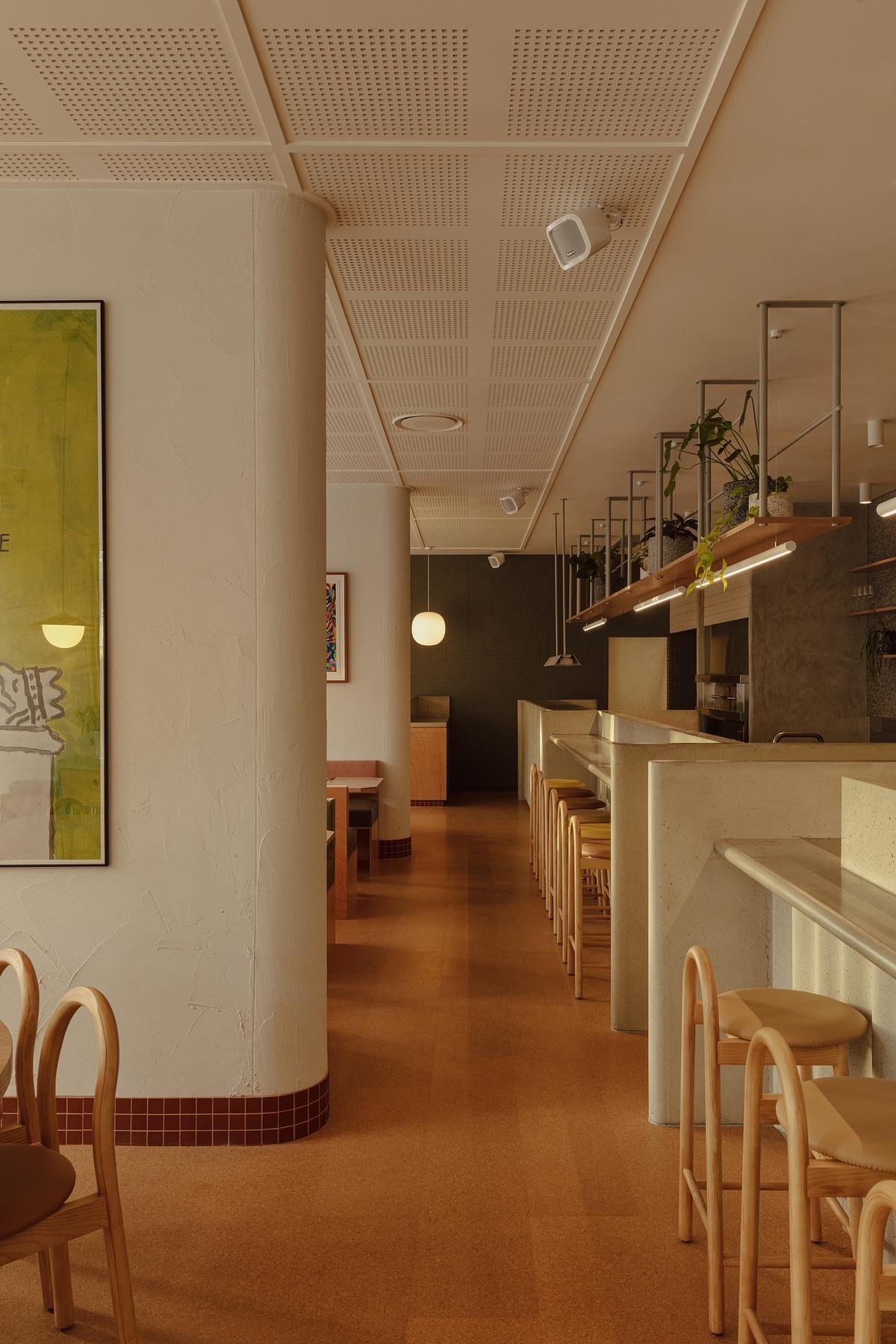
Shinbashi Tamakiya by aioi
Shinbashi Tamakiya's flagship store in Tokyo, designed by aioi, marks a rare moment in the history of one of Japan's oldest tsukudani specialists.
More than 240 years after its founding, the brand commissioned a redesign that would honour its cultural legacy while engaging a new generation of customers. The project was led by Yugo Fukasawa of aioi, a Japanese designer known for his refined, concept-driven approach to interiors and products. Born in Saitama, Fukasawa studied Environmental Design at Tama Art University before serving as chief designer at a Tokyo studio and later establishing aioi. His work often bridges traditional Japanese sensibilities with contemporary functionality, resulting in spaces that are both understated and deeply resonant.
The store reimagines the presentation of tsukudani, a preserved food developed in the Edo period, through a design that is minimal yet dignified. Fukasawa avoided the conventional layout of tsukudani shops, which typically feature high counters and a brisk, transactional customer flow. Instead, low, flat display fixtures encourage slower movement and exploration. This openness invites visitors to browse freely, fostering a more contemplative engagement with the brand's artisanal offerings.
At the heart of the concept is the integration of two key functions: a retail area for packaged products and a dining section where customers can sample dishes made with tsukudani. The latter is an uncommon addition for such a specialty store, transforming the interior into an experiential venue. Guests can not only purchase tsukudani but also discover its versatility and flavour through prepared dishes, connecting heritage with contemporary dining culture.
Materiality anchors the design in the brand's history. Paulownia wood, traditionally used to store and sell tsukudani in boxes, appears across walls, counters, and display units. The proportions of these elements subtly reference the partitions of such boxes, tying the contemporary interior to its historic roots. Fixtures rest on stone bases, their subdued tones complementing the warmth of the timber. Pale-coloured floor tiles, inspired by Edo-period illustrations of the store, are GREENGUARD-certified, reflecting a commitment to environmentally conscious choices.
The storefront features expansive windows, offering clear views into the interior and framing the products almost as curated exhibits. Display surfaces of varying heights create gentle layers in how items are encountered, without breaking the visual openness. The restrained palette, dominated by pale wood, muted stone, and neutral finishes, maintains a serene atmosphere, ensuring the products remain the focal point.
Beyond its visual and functional qualities, the design positions Shinbashi Tamakiya as both custodian of tradition and a forward-looking brand. Tsukudani's origins in resourceful preservation, often using small fish or seaweed with low commercial value, align with modern values of sustainability and waste reduction. By pairing its historical identity with an accessible, contemporary environment, the store appeals to younger audiences and international visitors, extending its cultural and commercial reach.
Through this project, Fukasawa has created a place that operates on multiple levels: retail environment, dining destination, and educational platform for Japanese culinary heritage. Its restraint and clarity mirror the essence of tsukudani itself, unassuming in appearance, yet rich in depth and tradition, ensuring Shinbashi Tamakiya's legacy continues to thrive well into the future.












